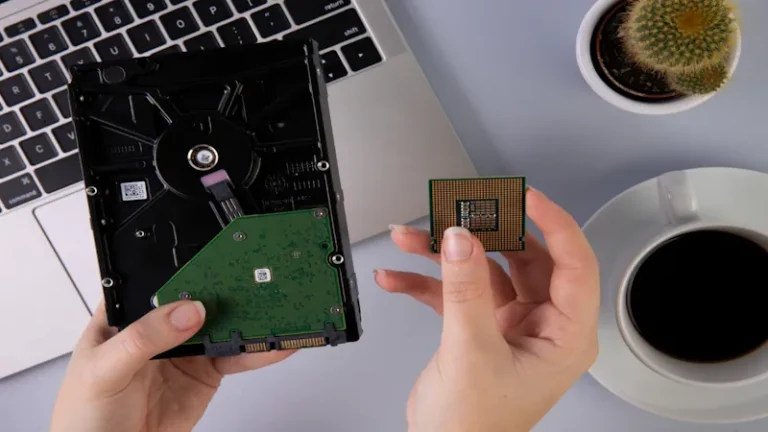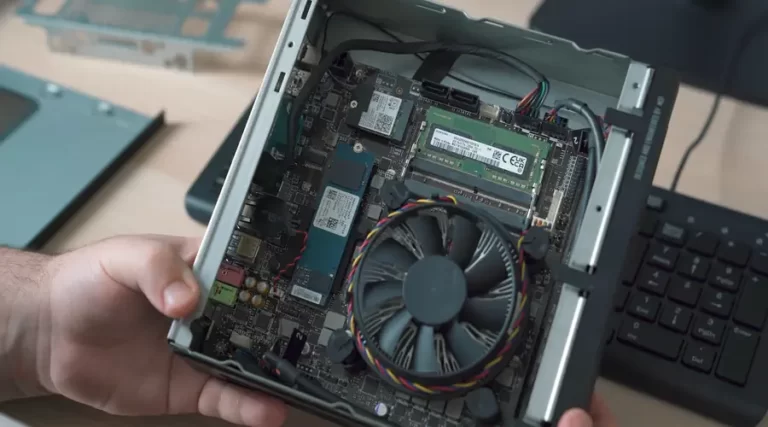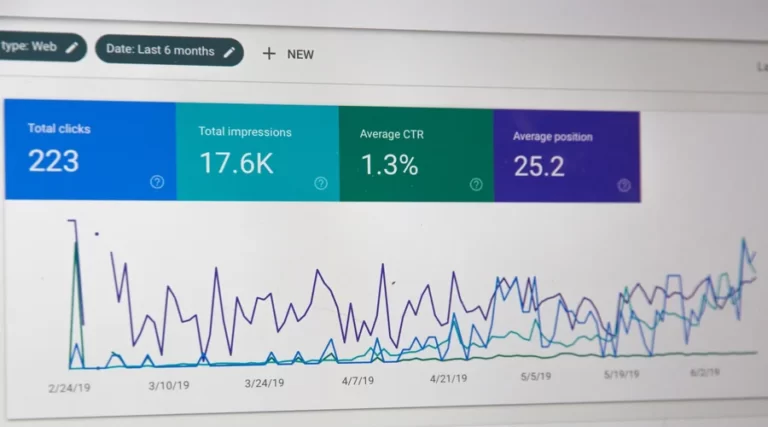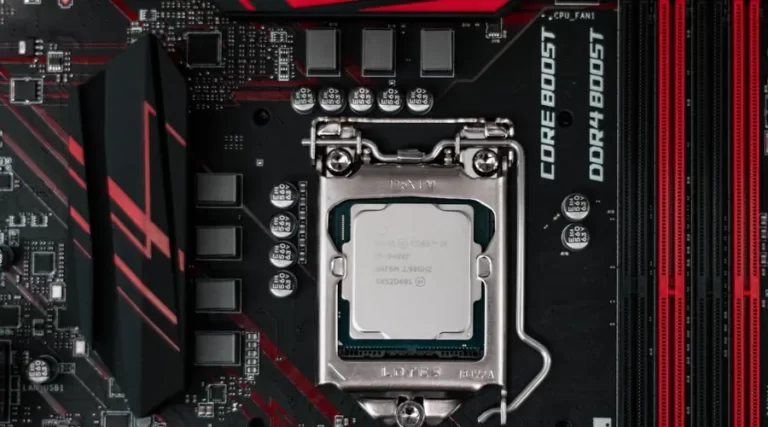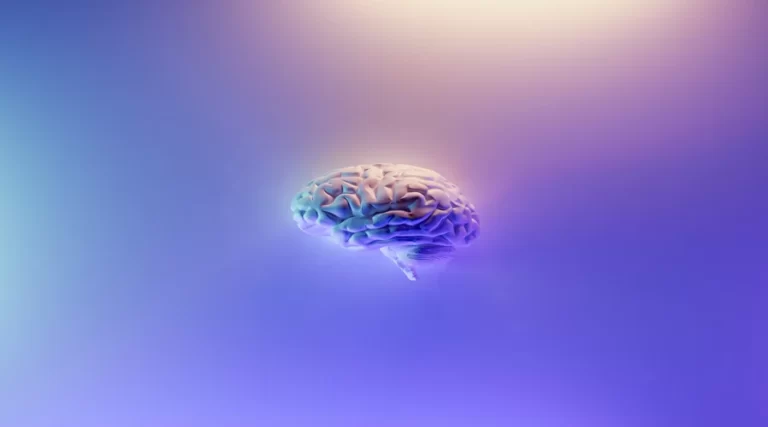What Is Microcomputer? Definition With Explanation
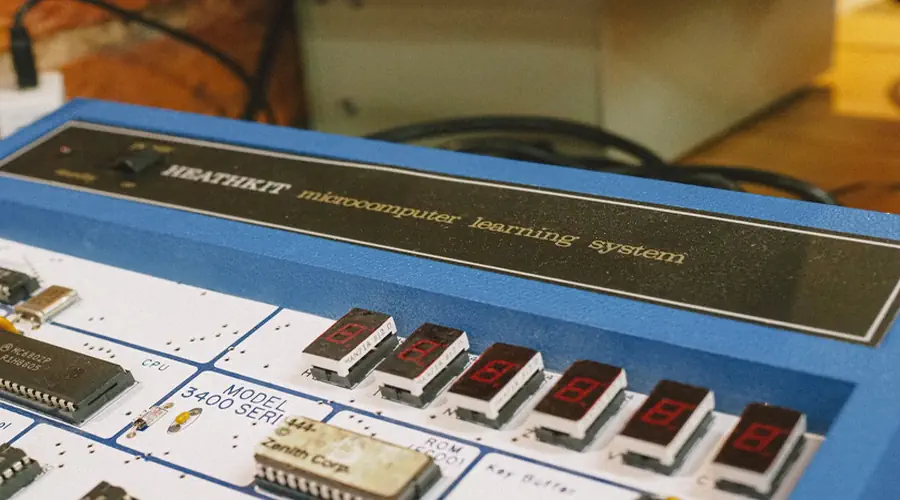
Microcomputer – Definition
A microcomputer is an all-in-one and small-scale computer designed for individual use. It has a single motherboard that houses a single microprocessor as its Central Processing Unit (CPU), together with memory in the form of Read-Only Memory (ROM) and Random Access Memory (RAM), input/output (I/O) ports, and a network of connecting wires.
Microcomputers were first introduced in the 1970s and have undergone significant development since then. Today, the refined form of microcomputers includes a variety of devices, such as desktops, laptops, smartphones, tabelets, and workstations.
History of Microcomputer
The history of microcomputers can be dated back to the late 1970s when the first personal computers were introduced to the market. Prior to that, large corporations, government agencies, and universities used computers (minicomputers and mainframes) that were typically the size of a room or larger.
Micro Instrumentation and Telemetry Systems (MITS) released the first-ever microcomputer, Altair 8800, in 1975. Based on the Intel 8080 microprocessor, it was initially marketed to hobbyists and DIY enthusiasts. The Altair 8800 was followed by the release of the Apple I in 1976, which was created by Steve Wozniak.
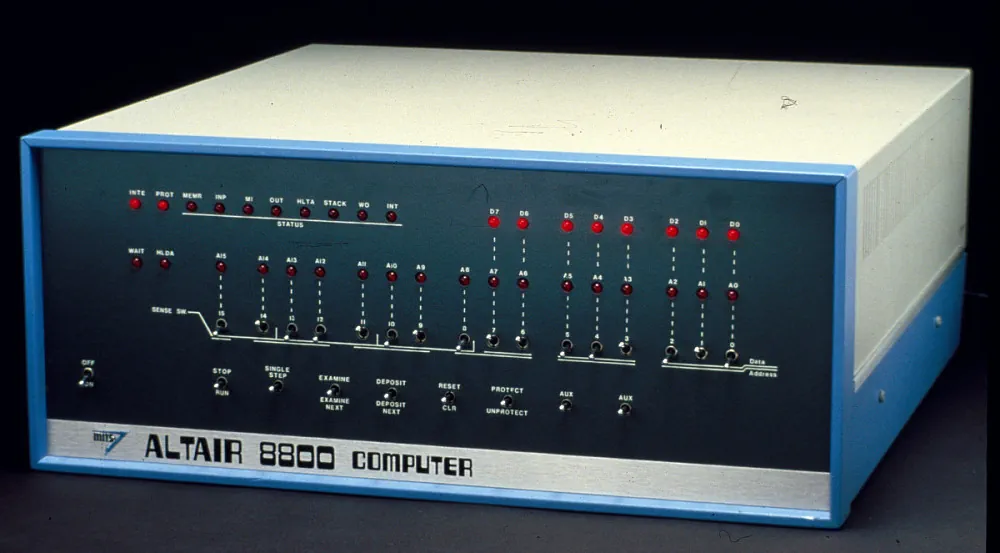
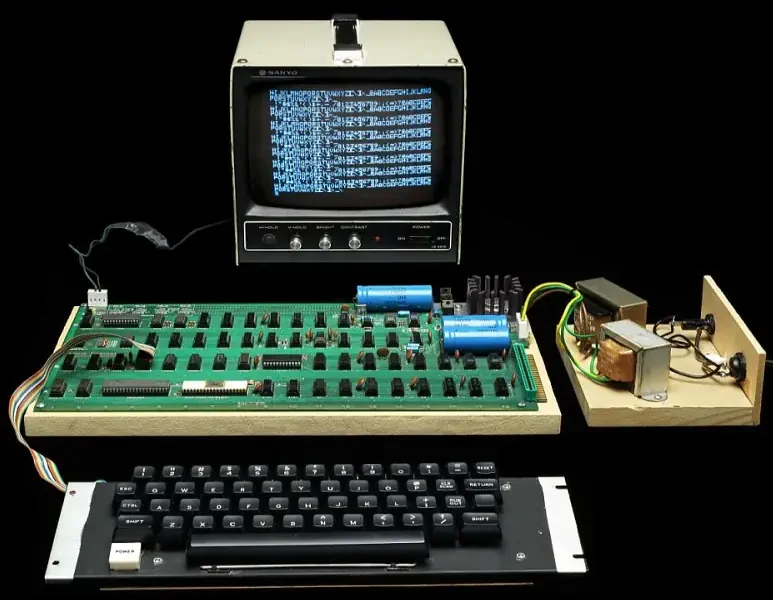
In 1977, Apple introduced the Apple II, which was a more refined version of the Apple I. The same year, Tandy Corporation released the TRS-80, also known as the “Trash-80,” which was one of the first mass-produced personal computers.
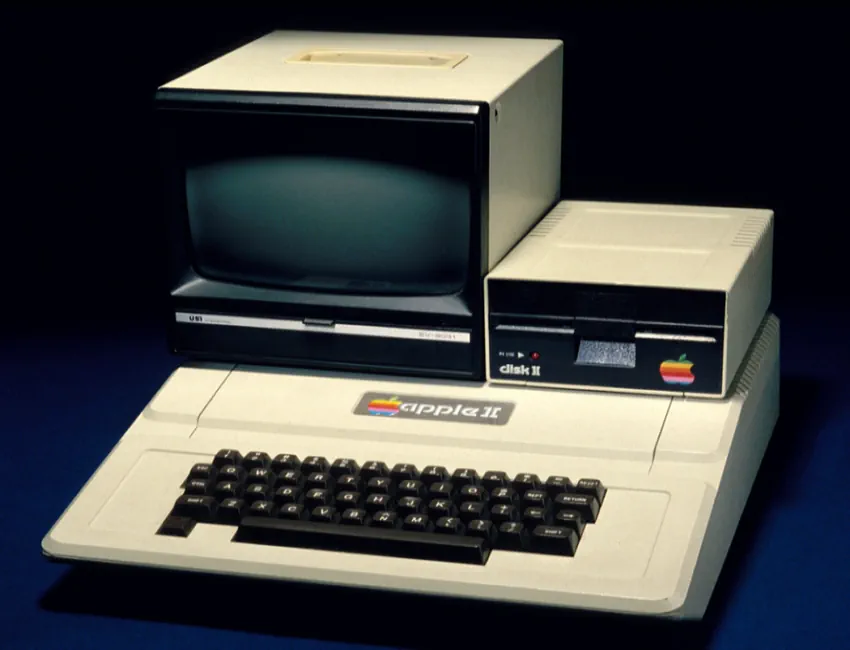
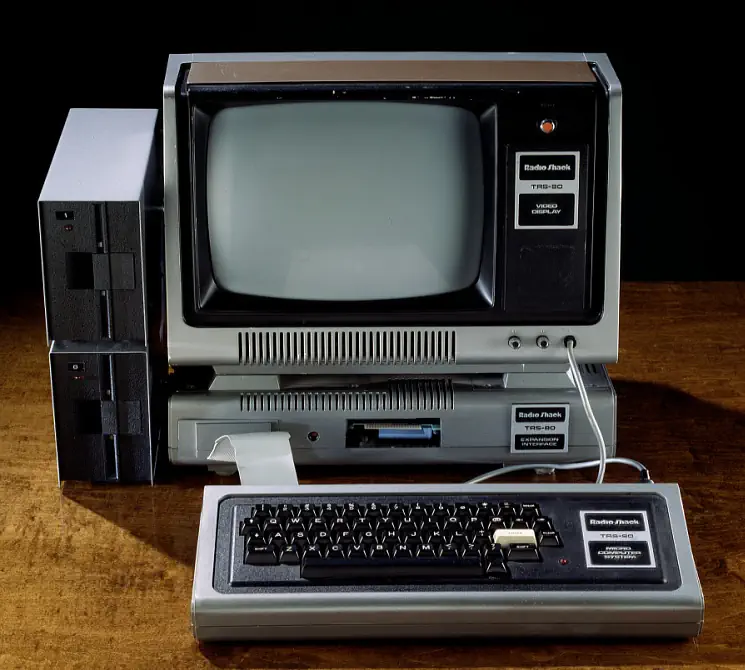
During the late 1970s and early 1980s, several other companies entered the market with their own microcomputers, including Commodore Business Machines with the Commodore PET, and IBM with the IBM PC. The IBM PC became the de facto standard for personal computers, and its architecture and operating system, MS-DOS, were widely adopted by other computer manufacturers.
The introduction of the Macintosh in 1984 marked a major turning point in the history of microcomputers. The Macintosh’s “Fat Mac” was the first computer to feature a graphical user interface (GUI) and was a major departure from the text-based interfaces of previous computers.
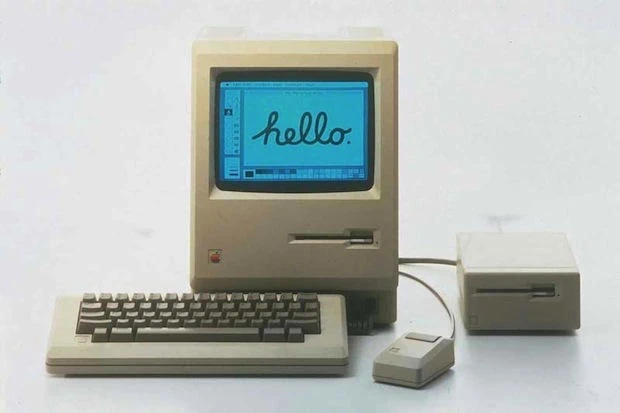
The development of new technologies such as smartphones and tablets continued to drive the development of microcomputers throughout the late 20th and early 21st centuries.
Components of a Microcomputer
Microprocessor
A microprocessor contains two main parts, the Control Unit (CU) and the Arithmetic Logic Unit (ALU). The ALU performs mathematical operations and the CU controls the execution and sequence of instructions. The microprocessor plays a crucial role in processing data and performing calculations.
Arithmetic Logic Unit (ALU)
The Arithmetic Logic Unit is the calculation unit in a microcomputer. It performs operations such as addition, subtraction, multiplication, and complement. The ALU uses registers, multiplexers, adders, and half adders to perform these calculations, and it also uses flags like zero flag, carry flag, overflow flag, and status flag.
Control Unit (CU)
The Control Unit plays a key role in determining the order and execution of instructions. It receives commands from input devices, reformats these commands, locates data in memory, and then directs the ALU to carry out the specified operations. The CU also controls registers, buses, circuits, and multiplexers.
Memory Unit
The Memory Unit regulates the flow of information into and out of the system. It employs various memory management strategies such as First-In-First-Out (FIFO), Last-In-First-Out (LIFO), Optimal Page Replacement (OPR), and Least Recently Used (LRU). The microcomputer has two distinct forms of memory: volatile and non-volatile. Volatile.
RAM (Random Access Memory)
Random Access Memory (RAM), commonly referred to as physical memory, is a form of volatile memory that operates at a faster speed than a hard disk. Positioned between the CPU and hard disk, RAM serves as a processing hub for data. Information is transferred from the hard disk to RAM, where the CPU can then access it.
ROM (Read Only Memory)
Read Only Memory (ROM) is a form of non-volatile memory that holds data permanently. When you turn on the system, the ROM loads the boot record that the manufacturer already stored in the ROM. One cannot simply delete the data on ROM as this data is necessary to boot up the system.
Input/Output Devices
Some common input devices in a microcomputer include a keyboard, mouse, microphone, touchpad, webcam, etc. The output devices include a monitor, speaker, headphones, etc.
Types of Microcomputer
The various types of microcomputers include notebooks, laptops, desktops, workstations, tablets, smartphones, Personal Digital Assistants (PDAs), and server microcomputers.
Desktop Computer
Desktop computers are the most widely used type of microcomputer. They are larger than laptops and notebooks, consisting of the system unit, keyboard, and monitor. Desktop microcomputers are more reliable and easier to repair than laptops or notebooks, and they offer more features at a lower cost.
Notebook
A notebook is a type of microcomputer that is ultra-mobile and compact in size. It can easily fit into a room, being less than 3 inches thick and less than 3 pounds in weight. You can link it to the Internet either through a cable connection or via Wi-Fi.
Laptop
Laptop microcomputers are bigger than notebooks and are designed for low power consumption. It has the same capabilities as a desktop computer but with a more portable design, featuring a thin display screen, an attached keyboard, and a touchpad for navigation.
Workstation
Workstation microcomputers are top-end microcomputers for data sharing via the business network environment. They are interconnected with other computers in the organization to centralize the work procedure, increase the efficiency of official work, and store data.
Tablet
Tablets are handheld electronic devices that are commonly used for both professional and personal purposes. They offer larger screens than smartphones and offer features such as word processing and spreadsheet software. Examples of popular tablets include Apple iPad and Amazon Kindle.
Smartphone
Smartphones are small devices that offer a touch interface and numerous functionalities, such as making phone calls, accessing networks, taking photos, and more. They are manufactured by companies such as Apple, Samsung, and Xiaomi.
Personal Digital Assistant (PDA)
Personal Digital Assistant (PDAs) are microcomputers that function as digital information managers. They offer features similar to smartphones but with additional functions such as a stylus and drawing option for writing information.
Server Microcomputer
A server microcomputer is a microcomputer that distributes data to computers connected to the network. It holds large quantities of data and sends it to connected computers upon request.
Benefits of Microcomputers
Microcomputers have several benefits:
- Connection: All microcomputers allow for internet connectivity, allowing users to explore the internet, send messages, watch movies, stream music, and more. This provides a convenient and cordless way to use the internet.
- Cost: Microcomputers can vary in cost, but some may be more affordable for consumers due to the increasing supply and demand. However, this can vary based on the specific production company or distributor.
- Portability: Most microcomputers, such as laptops, smartphones, and tablets, are lightweight and portable, allowing for internet access from anywhere.
- Maintenance: Microcomputers are relatively easy to handle and operate, both hardware and software-wise. Many users can even fix problems on their own, and if there is any malfunctioning hardware, users can simply replace it.
- Information: Microcomputers connected to the internet provide access to a vast range of information from various subjects, especially for students looking to expand their knowledge.
- Small size: Microcomputers, or PCs, are smaller in size compared to mainframe and supercomputers.
Uses of Microcomputer
In-Home for Personal Usage
Microcomputers are commonly used in homes for various personal purposes such as gaming, entertainment, listening to music, printing, scanning, browsing the internet, booking tickets, watching movies, sending and receiving emails, playing games, storing data, etc.
Business Usage
Microcomputers have a major impact on the business sector by reducing the amount of paperwork involved in various tasks. Every business uses them to process large amounts of data in a short amount of time. This makes it easier for employees in every sector of business like banks, retail, and software development to perform their tasks effectively.
Use In the Medical Sector
Microcomputers play a crucial role in the medical sector. Hospitals use microcomputers to keep records of patients. Lab technicians also use microcomputers in sophisticated equipment like X-ray machines and MRI devices to make medical diagnoses.
Use In the Education Sector
Colleges and universities use microcomputers to teach computer education to students. They also use them for research work.
Accounting Sector Usgae
You can use microcomputers to run accounting software to create financial reports for individuals or companies. Shopkeepers and businessmen use accounting software to keep records of sales and purchases of products.
Connections with People
In today’s connected world, microcomputers allow people to connect with others globally via voice/video/text chat and emails. They also enable people to share their views on any topic online.
Stock Exchange
In the stock exchange business, investors use microcomputers with software installed to buy and sell stocks in the stock market.
App Creation
You can create mobile apps in microcomputers, which are becoming increasingly important for smartphones.
Microcomputers And the Internet of Things (IoT)
Microcomputers play a significant role in the Internet of Things (IoT) by providing the processing power and connectivity needed to control and monitor connected devices. New technology enables microcomputers to integrate into IoT devices such as smart home devices, wearable technology, and industrial equipment, allowing for seamless communication and control over the internet.
What Is the Difference Between Microcomputers And Mainframe Computers?
A microcomputer is a small and inexpensive computer designed for personal or home use, whereas a mainframe is a large and expensive computer primarily used by large organizations for critical applications, such as bulk data processing, enterprise resource planning, and transaction processing. Mainframes are highly reliable, powerful, and secure systems, capable of handling massive amounts of data and tens of thousands of concurrent users.
What Is the Difference Between Microcomputers And Minicomputers?
Microcomputers and minicomputers are both computer systems but differ in terms of processing power, memory, and storage capacity. Scientists designed Microcomputers for individual or home use, with limited processing power, memory, and storage.
On the other hand, minicomputers, also known as mid-range systems, have the more advanced processing power, memory, and storage capabilities, making them suitable for small to medium-sized businesses and organizations. Minicomputers were introduced before microcomputers in the 1960s. They handled multiple tasks and users, whereas only one user can use a microcomputer at a time.
Conclusion
Today, microcomputers have become an essential part of daily life for a wide range of activities, like communication, entertainment, education, and commerce. The advancements in microcomputer technology have revolutionized the way we live and work, and have brought about a new era of technological innovation and progress.
Microcomputers have a wide range of uses, from personal and home use to business and education. They play a crucial role in various sectors, including healthcare, education, and the stock exchange. With their versatility and capabilities, they are likely to continue to be essential tools in many areas of our lives.

